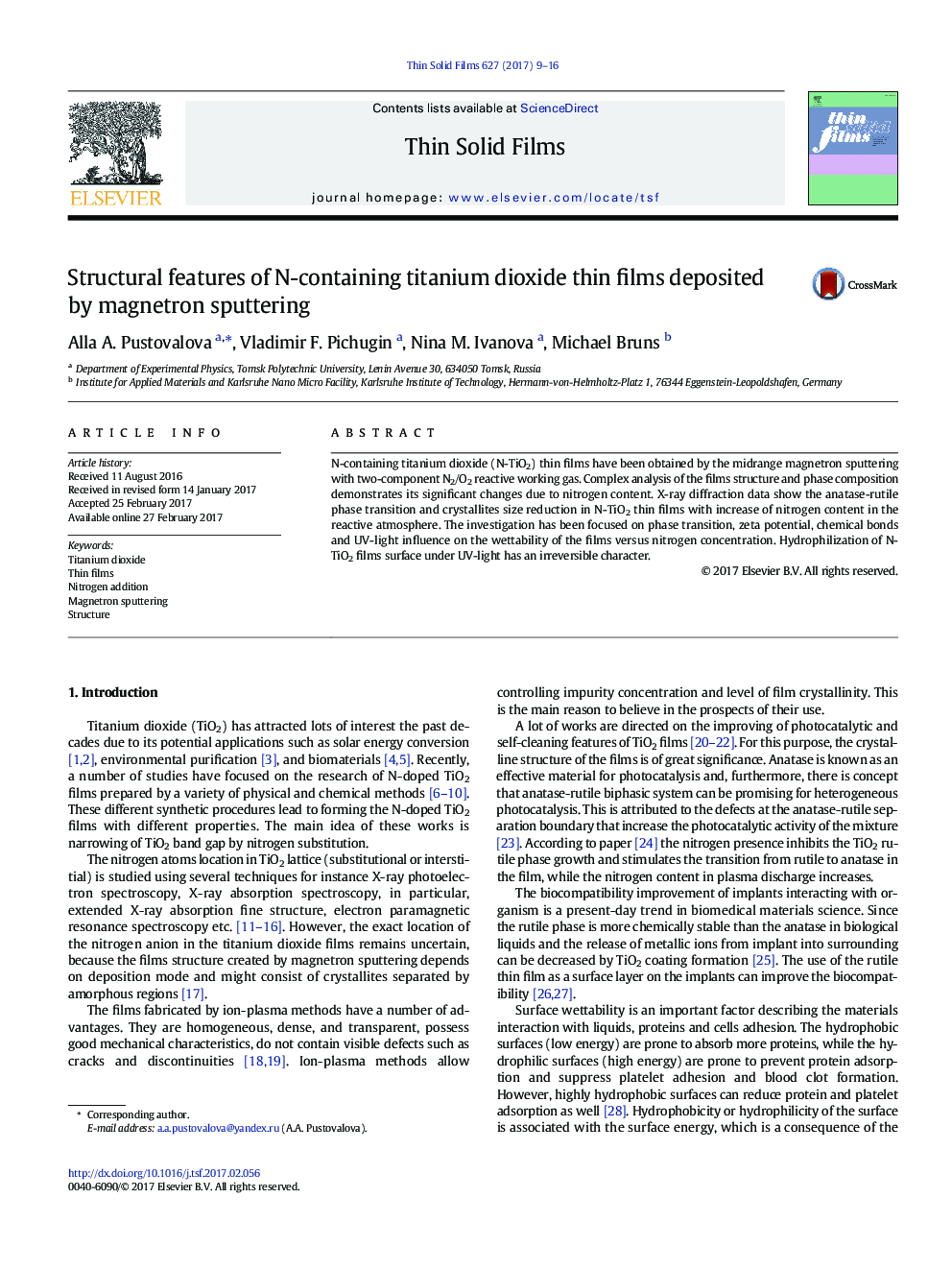| Article ID | Journal | Published Year | Pages | File Type |
|---|---|---|---|---|
| 5466250 | Thin Solid Films | 2017 | 8 Pages |
â¢N-TiO2 films were obtained with different nitrogen content in magnetron plasma.â¢Preferential rutile formation is due to the nitrogen increase in plasma.â¢Structural elements refinement takes place with the nitrogen increase in plasma.â¢Modified Structure Zone Model was developed on the basis of nitrogen location.â¢Ultraviolet radiation results in weak hydrophilization of the film surface.
N-containing titanium dioxide (N-TiO2) thin films have been obtained by the midrange magnetron sputtering with two-component N2/O2 reactive working gas. Complex analysis of the films structure and phase composition demonstrates its significant changes due to nitrogen content. X-ray diffraction data show the anatase-rutile phase transition and crystallites size reduction in N-TiO2 thin films with increase of nitrogen content in the reactive atmosphere. The investigation has been focused on phase transition, zeta potential, chemical bonds and UV-light influence on the wettability of the films versus nitrogen concentration. Hydrophilization of N-TiO2 films surface under UV-light has an irreversible character.
